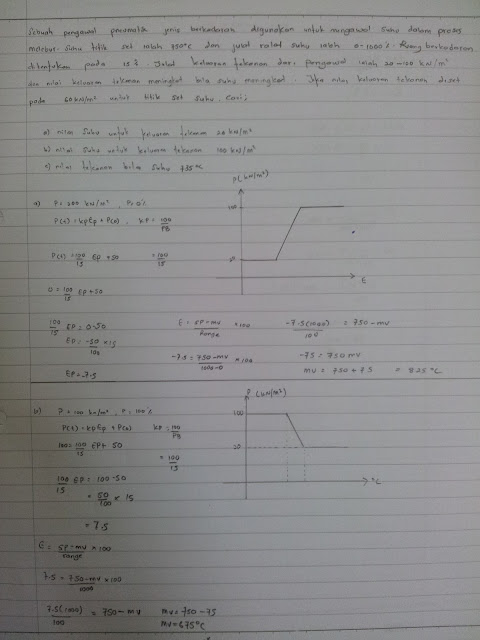1. A Proportional Controller is used for controlling temperature in melting process. Temperature set point is750°C and temperature measuring tool range is 0 - 1000°C . Proportional space is set at 15%. Pressure output range from controller is 20 –100 kN/m2 and pressure output rises when temperature increases. If pressure output is set at 60 kN/m2 for temperature set
point, find
i) Temperature for pressure output at 20 kN/m2
ii) Temperature for pressure output at 100 kN/m2
SOLUTION:
i) Temperature for pressure output at 20 kN/m2
ii) Temperature for pressure output at 100 kN/m2
2. In a process, a Proportional Controller is used to control the liquid level in the boiler. The
level is set at 8 meters and the level range is 1 to 14 meters. Proportional band is at
20%. The output current has a range of 5 – 20mA. Determine:-
i. The output level when current is 5 mA.
ii. The output current at a level of 10 meters.
SOLUTION:
3. An air to open valve on the inflow controls level in a tank. When the process is at the set point the valve opening is 50%. An increase in outflow results in the valve opening increasing to a new steady state value of 80%. What is the resulting offset if the controller PB is:
i) 80%
ii) 40%.
SOLUTION:
4. A temperature controller has the following characteristic curve below:

The controller has a range of 100 0C to 400 0C. The set‐point is 250 0C. Calculate:
i. The controller Proportional Band
ii. The controller Proportional Gain
SOLUTION:













